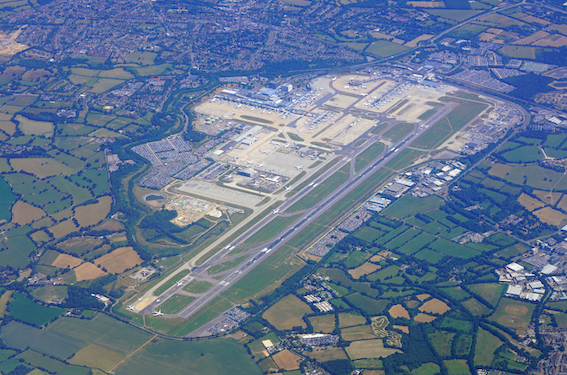
Gatwick Airport is vital for the region’s economy and drives local trade and employment. It also acts as the region’s gateway to the world, welcoming 5.5 million overseas visitors a year.
The region’s tourism industry benefits in particular and these visitors have been shown to spend around 9.7 million nights and £1.3 billion in the area each year. They also support over 5,000 local jobs.
While these numbers are impressive - with London just up the road - competition is stiff. With that in mind, the aptly named ‘Gateway Gatwick’ group formed in 2018 to help the local tourism sector make the most of having the UK’s second largest airport on its doorstep.
It brings together regional partners, including the airport, local tourism bodies and local authorities, and allows them to share information and co-ordinate and amplify activity promoting local tourism.
For example, Gatwick provides insight from - and gives access to – international partners such as airlines and tour operators. It also provides on-airport promotional space to help market local attractions to the 46 million passengers who pass through every year.
Gatwick Gateway is a long-term, sustainable partnership and is designed to spread the benefits that the airport generates across the region.
Its latest collaboration is a marketing campaign targeting passengers in the airport with a series of new guides on getting the most from the local area, even if with limited time to spare. The guides include bespoke itineraries on where to visit with anywhere between three to 12 hours available. Key themes also showcase the local Active Outdoors, Amazing Gardens, Castles and Stately Homes, English Wine, Gin and Ale.
As well as driving visitors to local attractions, Gatwick is looking to form other long-term partnerships by hosting local food and drink producers at its first ever ‘Meet the Local Producer’ event.
Taking place this month, the event will link up over 40 local food and beverage producers with airport buyers including shops, restaurants and hotels from across the region. Attendees range from start-ups to established producers including Crumbs Brewing, Reigate, Kent Crisps and Harley House Distillery – producers of Sussex Gin.
The airport already stocks several local suppliers but is keen to give more the opportunity to hook up with businesses interested in purchasing their goods. Airport retailers currently stock Surrey’s Silent Pool Gin and Kent’s Fudge Kitchen, and also Five Hop Lager from the Hogs Back Brewery Co. in Surrey.
Airport restaurants and bars also use local producers such as Ridgeview Wine from East Sussex, Brighton Gin, and stock ales from Westerham Brewery and Denbies Whitedown Brut from Surrey.
The Gatwick Gateway group and Meet the Producer events are just two examples of airport partnerships that help to boost local business and industrial sectors.
The airport plays a key role in business groups such as Gatwick Diamond Business, Chambers of Commerce and the Federation of Small Businesses. It also works in partnership with local authorities and regional partnerships such as the Coast to Capital Local Enterprise Partnership, Develop Croydon, Gatwick Diamond Initiative, and the Greater Brighton Economic Board to identify and address economic priorities.
While the opportunities the airport brings cannot be take for granted, these alliances and partnerships help to ensure the most is made of them – to the benefit of Gatwick, the region’s business and industrial sectors, and the local people they employ.
Gatwick Airport initiates planning process to use its existing Northern Runway
A move that kick starts the region’s biggest private investment for many years
Gatwick Airport has formally started the process to bring its existing Northern Runway into routine use by submitting a notice to the Planning Inspectorate (PINS) of its intention to prepare an application for development consent.
This action establishes the ‘Gatwick Airport Northern Runway’ project on the PINS website and is the first step in the Development Consent Order (DCO) application process.
The airport has also submitted a ‘Scoping Request’ to PINS, which sets out the proposed approach and key issues to be included within the process.
Following the publication of its master plan in July, Gatwick announced it would prepare a planning application known as a DCO – through a rigorous statutory process. The application is to bring the airport’s existing Northern Runway into routine use for smaller, departing aircraft alongside the main runway by the mid-2020s.
Tim Norwood, Gatwick’s Chief Planning Officer, said: “As the biggest private investment in our region for many years, the start of the process to use our existing Northern Runway is a significant milestone. This project has the capacity to offer significant local economic benefits, new jobs and an exciting future for the region.
“As we take our plans forward, we are committed to working in partnership with our local communities, councils and partners to ensure we grow sustainably and present information in a clear and transparent way, including a more detailed stage of public consultation on the project next year.”





